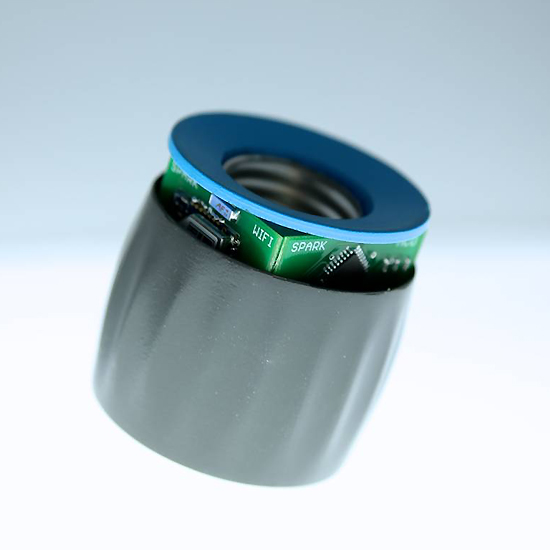In the future, we’re told, homes will be filled with smart gadgets
connected to the Internet, giving us remote control of our homes and
making the grid smarter. Wireless thermostats and now lighting appear to
be leading the way.
Startup Greenwave Reality today announced that its wireless LED
lighting kit is available in the U.S., although not through retail sales
channels. The company, headed by former consumer electronics
executives, plans to sell the set, which includes four
40-watt-equivalent bulbs and a smartphone application, through utilities
and lighting companies for about $200, according to CEO Greg Memo.
The Connected Lighting Solution includes four EnergyStar-rated LED
light bulbs, a gateway box that connects to a home router, and a remote
control. Customers also download a smartphone or tablet app that lets
people turn lights on or off, dim lights, or set up schedules.
Installation is extremely easy. Greenwave Reality sent me a set to
try out, and I had it operating within a few minutes. The bulbs each
have their own IP address and are paired with the gateway out of the
box, so there’s no need to configure the bulbs, which communicate over
the home wireless network or over the Internet for remote access.
Using the app is fun, if only for the novelty. When’s the last time
you used your iPhone to turn off the lights downstairs? It also lets
people put lights on a schedule (they can be used outside in a sheltered
area but not exposed directly to water) or set custom scenes. For
instance, Memo set some of the wireless bulbs in his kitchen to be at
half dimness during the day.
Many smart-home or smart-building advocates say that lighting is the
toehold for a house full of networked gadgets. “The thing about lighting
is that it’s a lot more personal than appliances or a thermostat. It’s
actually something that affects people’s moods and comfort,” Memo says.
“We think this will move the needle on the automated home.”
Rather than sell directly to consumers, as most other smart lighting
products are, Greenwave Reality intends to sell through utilities and
service companies. While gadget-oriented consumers may be attracted to
wireless light bulbs, utilities are interested in energy savings. And
because these lights are connected to the Internet, energy savings can
be quantified.
In Europe and many states, utilities are required to spend money on
customer efficiency programs, such as rebates for efficient appliances
or subsidizing compact fluorescent bulbs. But unlike traditional CFLs,
network-connected LEDs can report usage information. That allows
Greenwave Reality to see how many bulbs are actually in use and verify
the intended energy savings of, for example, subsidized light bulbs.
(The reported data would be anonymized, Memo says.) Utilities could also
make lighting part of demand response programs to lower power during
peak times.
As for performance of the bulbs, there is essentially no latency when
using the smartphone app. The remote control essentially brings dimmers
to fixtures that don’t have them already.
For people who like the idea of bringing the Internet of things to their home with smart gadgets, LED lights (and thermostats)
seem like a good way to start. But in the end, it may be the energy
savings of better managed and more efficient light bulbs that will give
wireless lighting a broader appeal.
Green Wave


